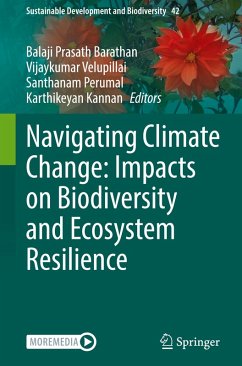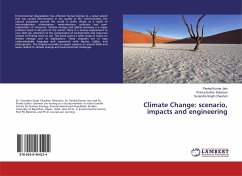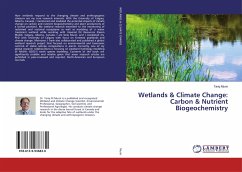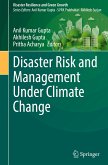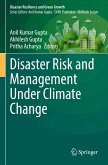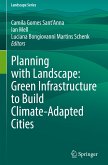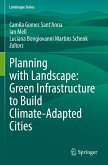Navigating Climate Change: Impacts on Biodiversity and Ecosystem Resilience
Herausgegeben:Barathan, Balaji Prasath; Velupillai, Vijaykumar; Perumal, Santhanam; Kannan, Karthikeyan
Navigating Climate Change: Impacts on Biodiversity and Ecosystem Resilience
Herausgegeben:Barathan, Balaji Prasath; Velupillai, Vijaykumar; Perumal, Santhanam; Kannan, Karthikeyan
- Gebundenes Buch
- Merkliste
- Auf die Merkliste
- Bewerten Bewerten
- Teilen
- Produkt teilen
- Produkterinnerung
- Produkterinnerung
This contributed volume studies the important associations existing among climate change, biodiversity, and human welfare. It gives an all-inclusive explanation of how climate alteration jeopardizes the variety of living organisms on Earth and its impacts on people's welfare.
The chapters cover topics such as the effects of climate change on marine and terrestrial ecosystems, range shifts, phenology patterns in species, and conservation strategies. Expert contributors provide actionable solutions for mitigating climate change impacts while emphasizing the interactive relationship between…mehr
Andere Kunden interessierten sich auch für
![Climate Change: scenario, impacts and engineering Climate Change: scenario, impacts and engineering]() Pankaj Kumar JainClimate Change: scenario, impacts and engineering27,99 €
Pankaj Kumar JainClimate Change: scenario, impacts and engineering27,99 €![Wetlands & Climate Change: Carbon & Nutrient Biogeochemistry Wetlands & Climate Change: Carbon & Nutrient Biogeochemistry]() Tariq MunirWetlands & Climate Change: Carbon & Nutrient Biogeochemistry51,99 €
Tariq MunirWetlands & Climate Change: Carbon & Nutrient Biogeochemistry51,99 €![Disaster Risk and Management Under Climate Change Disaster Risk and Management Under Climate Change]() Disaster Risk and Management Under Climate Change136,99 €
Disaster Risk and Management Under Climate Change136,99 €![Disaster Risk and Management Under Climate Change Disaster Risk and Management Under Climate Change]() Disaster Risk and Management Under Climate Change136,99 €
Disaster Risk and Management Under Climate Change136,99 €![Planning with Landscape: Green Infrastructure to Build Climate-Adapted Cities Planning with Landscape: Green Infrastructure to Build Climate-Adapted Cities]() Planning with Landscape: Green Infrastructure to Build Climate-Adapted Cities121,99 €
Planning with Landscape: Green Infrastructure to Build Climate-Adapted Cities121,99 €![Planning with Landscape: Green Infrastructure to Build Climate-Adapted Cities Planning with Landscape: Green Infrastructure to Build Climate-Adapted Cities]() Planning with Landscape: Green Infrastructure to Build Climate-Adapted Cities121,99 €
Planning with Landscape: Green Infrastructure to Build Climate-Adapted Cities121,99 €![Ecosystem-based Approaches for Resilience Building in Himalayan Landscapes Ecosystem-based Approaches for Resilience Building in Himalayan Landscapes]() Ecosystem-based Approaches for Resilience Building in Himalayan Landscapes151,99 €
Ecosystem-based Approaches for Resilience Building in Himalayan Landscapes151,99 €-
-
-
This contributed volume studies the important associations existing among climate change, biodiversity, and human welfare. It gives an all-inclusive explanation of how climate alteration jeopardizes the variety of living organisms on Earth and its impacts on people's welfare.
The chapters cover topics such as the effects of climate change on marine and terrestrial ecosystems, range shifts, phenology patterns in species, and conservation strategies. Expert contributors provide actionable solutions for mitigating climate change impacts while emphasizing the interactive relationship between biodiversity loss and human well-being. Readers will discover diverse perspectives from renowned scholars who probe into critical questions about sustaining life forms amidst global warming. The book also covers the challenges of providing food for a growing global population amidst climate change and loss in biodiversity.
Researchers in environmental science, ecology, sustainability, and related fields will benefit from this comprehensive assessment. Policymakers involved in environmental policy-making or sustainable development planning will find practical strategies to reduce global warming forces while sustaining biodiversity. This book is also a valuable reference for academicians and professionals aiming to understand the complex interactions between climate change and ecosystem resilience.
The chapters cover topics such as the effects of climate change on marine and terrestrial ecosystems, range shifts, phenology patterns in species, and conservation strategies. Expert contributors provide actionable solutions for mitigating climate change impacts while emphasizing the interactive relationship between biodiversity loss and human well-being. Readers will discover diverse perspectives from renowned scholars who probe into critical questions about sustaining life forms amidst global warming. The book also covers the challenges of providing food for a growing global population amidst climate change and loss in biodiversity.
Researchers in environmental science, ecology, sustainability, and related fields will benefit from this comprehensive assessment. Policymakers involved in environmental policy-making or sustainable development planning will find practical strategies to reduce global warming forces while sustaining biodiversity. This book is also a valuable reference for academicians and professionals aiming to understand the complex interactions between climate change and ecosystem resilience.
Produktdetails
- Produktdetails
- Sustainable Development and Biodiversity 42
- Verlag: Springer / Springer Nature Singapore / Springer, Berlin
- Artikelnr. des Verlages: 978-981-95-0408-4
- Seitenzahl: 648
- Erscheinungstermin: 27. September 2025
- Englisch
- Abmessung: 241mm x 160mm x 41mm
- Gewicht: 1125g
- ISBN-13: 9789819504084
- ISBN-10: 9819504082
- Artikelnr.: 74915801
- Herstellerkennzeichnung
- Springer-Verlag GmbH
- Tiergartenstr. 17
- 69121 Heidelberg
- ProductSafety@springernature.com
- Sustainable Development and Biodiversity 42
- Verlag: Springer / Springer Nature Singapore / Springer, Berlin
- Artikelnr. des Verlages: 978-981-95-0408-4
- Seitenzahl: 648
- Erscheinungstermin: 27. September 2025
- Englisch
- Abmessung: 241mm x 160mm x 41mm
- Gewicht: 1125g
- ISBN-13: 9789819504084
- ISBN-10: 9819504082
- Artikelnr.: 74915801
- Herstellerkennzeichnung
- Springer-Verlag GmbH
- Tiergartenstr. 17
- 69121 Heidelberg
- ProductSafety@springernature.com
Dr. Balaji Prasath Barathan, is the Senior Scientist at the Gujarat Institute of Desert Ecology, He obtained his Ph.D. in Marine Science from Bharathidasan University, India. His areas of specialization include Marine Planktonology, Harmful Algal Blooms, Microbial Toxicology, and Wastewater Treatment. Dr Prasath comes with over 15 years of marine scientific research and field work. He has performed research work in the Indian Ocean and Chinese seas, as well as on-board Taiwan and Hong Kong, using scientific equipment to do sample analysis with Physical Chemical Environmental and Biological Oceanography. Dr. Prasath possesses an astounding collection of more than 60 published scholarly works, including research papers, reviews, books, and technical documents spread throughout multiple reputable international journals, he acts as an Academic Editor of many national and international journals and has more than 5 active memberships in scientific societies. Dr. Vijaykumar Velupillai is serving as Director of Gujarat Institute of Desert Ecology, with 39 years of experience in research, administration and teaching. Dr. Kumar has Ph.D in Biosciences - Wildlife. He has been part of 251 research/consultancy projects domestically and internationally, and expertise in wildlife research, restoration of pastures, management of watersheds, desertification and climate change. Dr. Kumar has authored 85 published articles in journals, newsletters, book and book chapters, with over 35 presentations at international/national conferences. Having extensively worked with diverse government and non-government organizations, his extensive project coordination with leading industrial firms has enabled him to gain proficiency within the corporate sector. In addition, he actively engages in development of infrastructure and collaborating with national and international institutions. Besides the IUCN, Dr. Kumar is a member of national and state level committees associated to environment and education. His contributions have also earned him numerous accolades such as the Oryx Award-UK in 1995 and Man of Excellence award 2021. Dr. Santhanam Perumal, a Professor in the Department of Marine Science at Bharathidasan University, Tamil Nadu, India, has 22 years of research and 17 years of teaching experience in Marine Biology. He completed his M.Sc., M.Phil, and PhD degrees from Annamalai University in Marine Planktonology and Aquaculture. He specializes in marine plankton biodiversity, eco-toxicology, and climate change and microplastic pollution, sustainable aquaculture including biofloc technology and aquaponics, and post- doctoral mentorship. As the mentor of 19 awarded PhDs, he has guided dozens of scholars and postdoctoral fellows. Aside from these contributions, he holds numerous administrative functions such as placement coordinator, training coordinator, and member of different councils of the university. Prof. P. Santhanam moves marine science forward with climate friendly aquaculture innovations and sustainable ecological solutions. Dr. Karthikeyan Kannan is the Assistant Director of Gujarat Institute of Desert Ecology, who holds his Ph. D in Environmental Sciences and has a working experience of 20 years in the field of Environmental Auditing, Marine Environmental Monitoring and Microbial biotechnology and 7 years of Teaching experience as an Adjunct Faculty in Environmental Science. He is a University First Rank holder in Microbiology and has qualified UGC-NET in Environmental Sciences and State Eligibility Test in Life Sciences. He is a Gujarat Pollution Control Board recognized Environmental Auditor. He has done projects sponsored by National funding agencies such as DST, DBT, MoES etc. He is a recognized Research Guide for Ph. D in Universities in Gujarat and Tamilnadu. He serves in various Academic. Environmental committees and also in various Conservation Cell and Monitoring committees of Industries.
I. Introduction.- 1. Blue Carbon Ecosystems of Kachchh Coast, Gujarat: Ecological Treasure of Coastal Biodiversity.- 2. Blue Carbon Potential of Indian Mangroves, Seagrass, and Salt Marshes: A Review of Current Knowledge and Future Directions for Climate Change Mitigation.- 3. Climate change as drivers of Microbial-Algal interactions and their implications.- 4. Climate change impacts: Insights from changing patterns of sardine fisheries in Indian waters.- 5. Deep-Sea Harpacticoids in the Indian Ocean: Insights into Biodiversity Amidst Global Climate Challenges.- 6. Impact of Climate change on the Sardine fishery in Indian subcontinent.- 7. Mussels: A Potent Ecological Indicator to Climate Change.- 8. Navigating the shifting shorelines: Climate change effects on intertidal fauna and their adaptations.- 9. Salinity Influence on Sediment Organic Carbon (SOC) Stock in the Different Coastal Ecosystems of Southern Andaman Island: An Overlooked Aspect of Blue Carbon Research.- 10. Deep-sea benthic biodiversity and climate change: Indian Ocean perspective.- 11. The contribution of the blue carbon ecosystem in reducing climate change and conserving carbon stocks: An Indian perspective.- 12. Coral Reefs in Transition: Coral Algal Interactions and Ecosystem Resilience.- 13. Sociable Lapwing and Beyond: Climate Change and the Imperative to Protect Biodiversity.- 14. Enhancing Climate Resilience in White Flower Agro ecosystems: Sustainable Practices and Innovations.- 15. Satellites to Sanctuaries: An integrative study to assess the detrimental impact of rapid urbanization on changes in land use and the avian fauna of the selected wetlands in Tamil Nadu India.- 16. Soil Texture, Salinity and Grass Composition: A Geospatial and Statistical Investigation.- 17. Terrestrial Diatoms as potential Indicators of the impacts of Climate Change.- 18. Tiny Survivors in a Changing Climate: Modelling the Future Distribution of Vallonia (Mollusca, Gastropoda, Valloniidae) Snails in India.- 19. Restoration efforts in mitigation of climate change: case study from Guneri village, Gujarat.- 20. Climate Change and the Dynamics of Coastal Pollution: A Plankton-Based Assessment of Chennai s Urban Creeks.- 21. Evaluating CO2 removal Technologies: A Life Cycle Assessment for Effective Climate Change Mitigation.- 22. Synergies between Algae and Aquaponics for Ecosystem Restoration and Climate Change Adaptation.- 23. Observation of Satellite derived sea surface temperature (SST) and pCO2 variability over the Bay of Bengal and Arabian Sea and its relation to chlorophyll variability.- 24. Warming Seas: The Impact of Climate Change on Ocean Life and Ecosystems.- 25. Remote Sensing observation of sea surface chlorophyll, temperature, nitrate and salinity over Bay of Bengal and Arabian Sea.- 26. Climate change and Invasive species: Suitability of Acacia auriculiformis in Kasaragod district, Kerala.- 27. The Role of Climate Change in Shaping Copepod Communities and Invasive Species Dynamics an ecological perspective.- 28. Climate Change and Environmental Instability the Rise of Invasive Species and Desertification.- 29. Changing Coastal Landscapes: The Role of Climate Change in Biodiversity Loss and Desertification.- II. Conclusion.
I. Introduction.- 1. Blue Carbon Ecosystems of Kachchh Coast, Gujarat: Ecological Treasure of Coastal Biodiversity.- 2. Blue Carbon Potential of Indian Mangroves, Seagrass, and Salt Marshes: A Review of Current Knowledge and Future Directions for Climate Change Mitigation.- 3. Climate change as drivers of Microbial-Algal interactions and their implications.- 4. Climate change impacts: Insights from changing patterns of sardine fisheries in Indian waters.- 5. Deep-Sea Harpacticoids in the Indian Ocean: Insights into Biodiversity Amidst Global Climate Challenges.- 6. Impact of Climate change on the Sardine fishery in Indian subcontinent.- 7. Mussels: A Potent Ecological Indicator to Climate Change.- 8. Navigating the shifting shorelines: Climate change effects on intertidal fauna and their adaptations.- 9. Salinity Influence on Sediment Organic Carbon (SOC) Stock in the Different Coastal Ecosystems of Southern Andaman Island: An Overlooked Aspect of Blue Carbon Research.- 10. Deep-sea benthic biodiversity and climate change: Indian Ocean perspective.- 11. The contribution of the blue carbon ecosystem in reducing climate change and conserving carbon stocks: An Indian perspective.- 12. Coral Reefs in Transition: Coral Algal Interactions and Ecosystem Resilience.- 13. Sociable Lapwing and Beyond: Climate Change and the Imperative to Protect Biodiversity.- 14. Enhancing Climate Resilience in White Flower Agro ecosystems: Sustainable Practices and Innovations.- 15. Satellites to Sanctuaries: An integrative study to assess the detrimental impact of rapid urbanization on changes in land use and the avian fauna of the selected wetlands in Tamil Nadu India.- 16. Soil Texture, Salinity and Grass Composition: A Geospatial and Statistical Investigation.- 17. Terrestrial Diatoms as potential Indicators of the impacts of Climate Change.- 18. Tiny Survivors in a Changing Climate: Modelling the Future Distribution of Vallonia (Mollusca, Gastropoda, Valloniidae) Snails in India.- 19. Restoration efforts in mitigation of climate change: case study from Guneri village, Gujarat.- 20. Climate Change and the Dynamics of Coastal Pollution: A Plankton-Based Assessment of Chennai s Urban Creeks.- 21. Evaluating CO2 removal Technologies: A Life Cycle Assessment for Effective Climate Change Mitigation.- 22. Synergies between Algae and Aquaponics for Ecosystem Restoration and Climate Change Adaptation.- 23. Observation of Satellite derived sea surface temperature (SST) and pCO2 variability over the Bay of Bengal and Arabian Sea and its relation to chlorophyll variability.- 24. Warming Seas: The Impact of Climate Change on Ocean Life and Ecosystems.- 25. Remote Sensing observation of sea surface chlorophyll, temperature, nitrate and salinity over Bay of Bengal and Arabian Sea.- 26. Climate change and Invasive species: Suitability of Acacia auriculiformis in Kasaragod district, Kerala.- 27. The Role of Climate Change in Shaping Copepod Communities and Invasive Species Dynamics an ecological perspective.- 28. Climate Change and Environmental Instability the Rise of Invasive Species and Desertification.- 29. Changing Coastal Landscapes: The Role of Climate Change in Biodiversity Loss and Desertification.- II. Conclusion.

